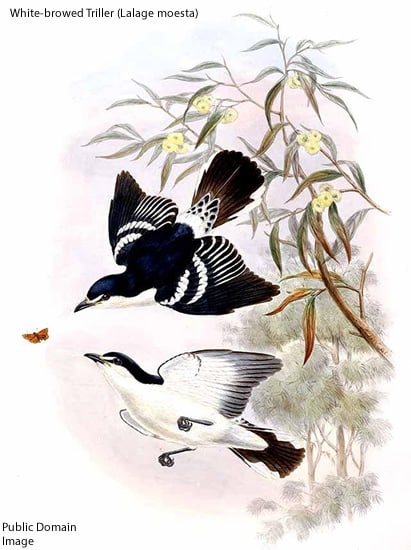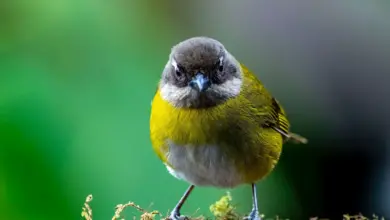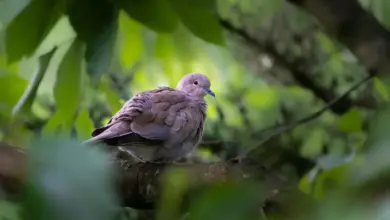Hummingbirds found in Louisiana, USA
Hummingbirds found in the USA (by U.S. State) … Canada … Mexico … Puerto Rico … Jamaica … Honduras
Hummingbirds found in Louisiana, USA
Hummingbird Information … Hummingbird Species Photo Gallery
The following 12 hummingbird species are known / believed to occur in Louisiana.
Ruby-throated Hummingbirds (Archilochus colubris) – Native / common summer visitors. Usually arrive in mid-April, although some come as early as mid- March. Mating and nesting usually occurs in June. They usually return to their wintering grounds in Mexico and Central America by late July. Some of them migrate south later, but usually they are all gone by mid-October. Migrating males are usually the first to arrive and the first to depart. The females and the young usually follow about two weeks later. Southern Louisiana in particular gets a number of western vagrants in the winter.
The male has a ruby-red throat, a white collar, an emerald green back and a forked tail.
The female has a green back and tail feathers that are banded white, black and grey-green.
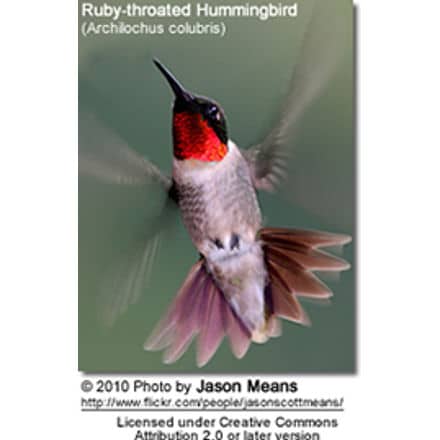
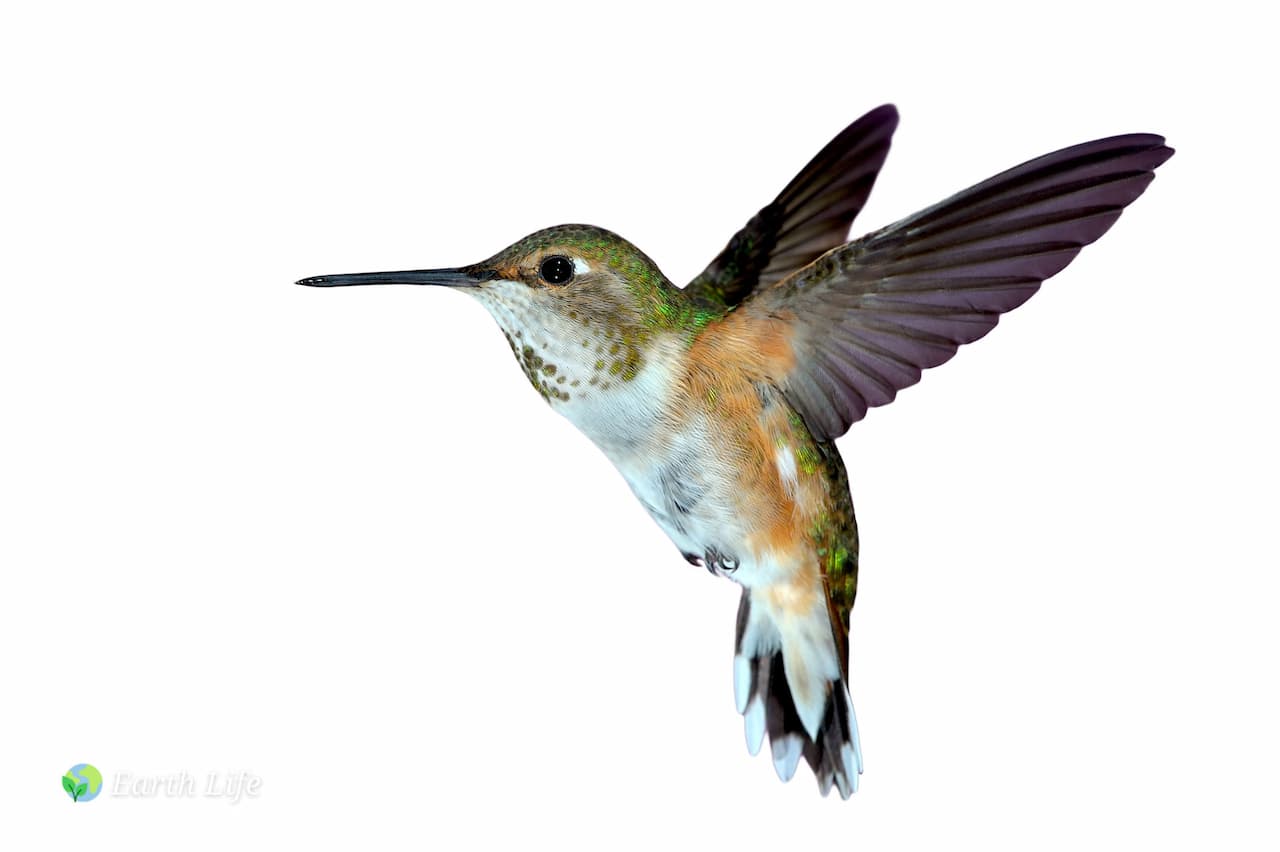
Rufous Hummingbirds (Selasphorus rufus) – Seasonal. These hummingbirds are usually found in gardens and at feeders. These birds are fearless, and are known for chasing away other hummingbirds and even larger birds, or rodents away from their favorite nectar feeders and flowers.
Males can easily be identified by their glossy orange-red throats.
Females have whitish, speckled throats, green backs and crowns, and rufous, white-tipped tail feathers.
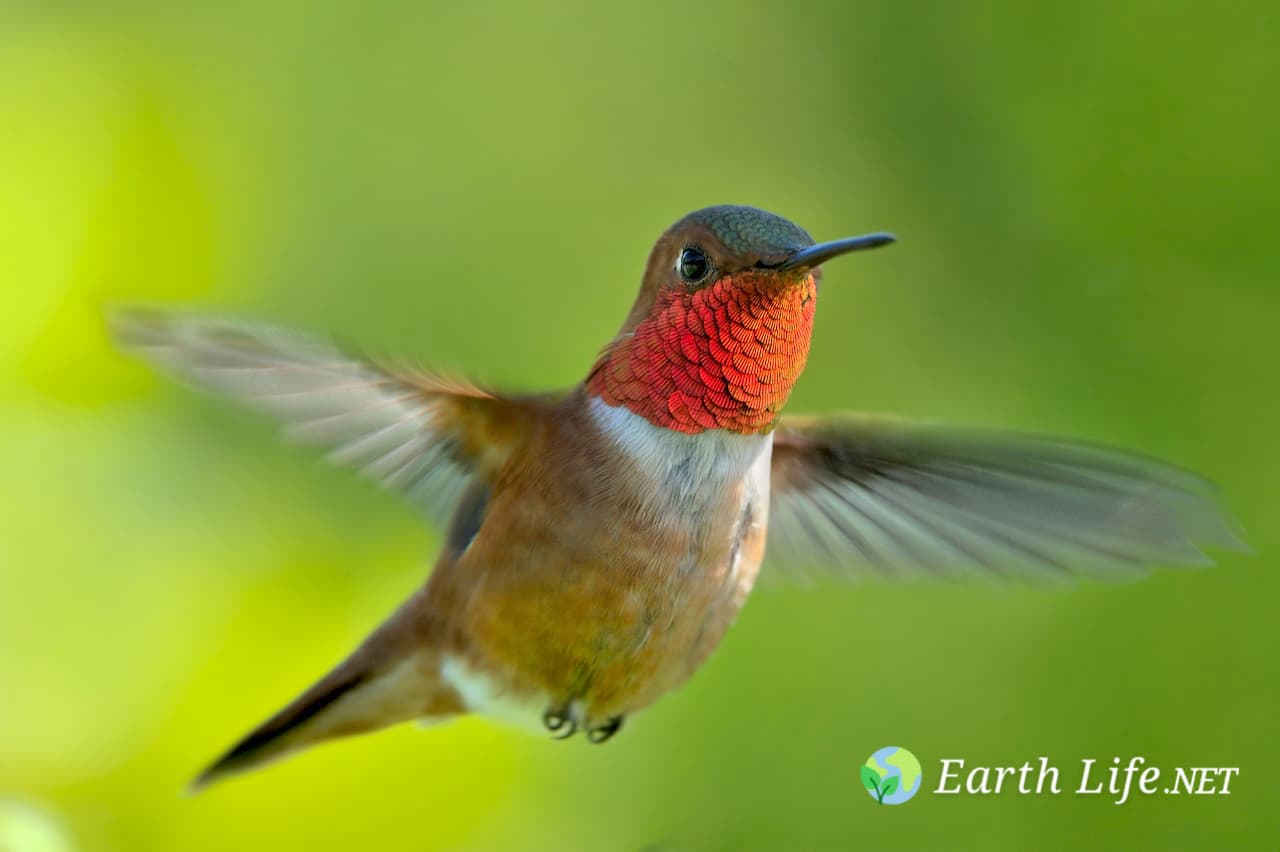
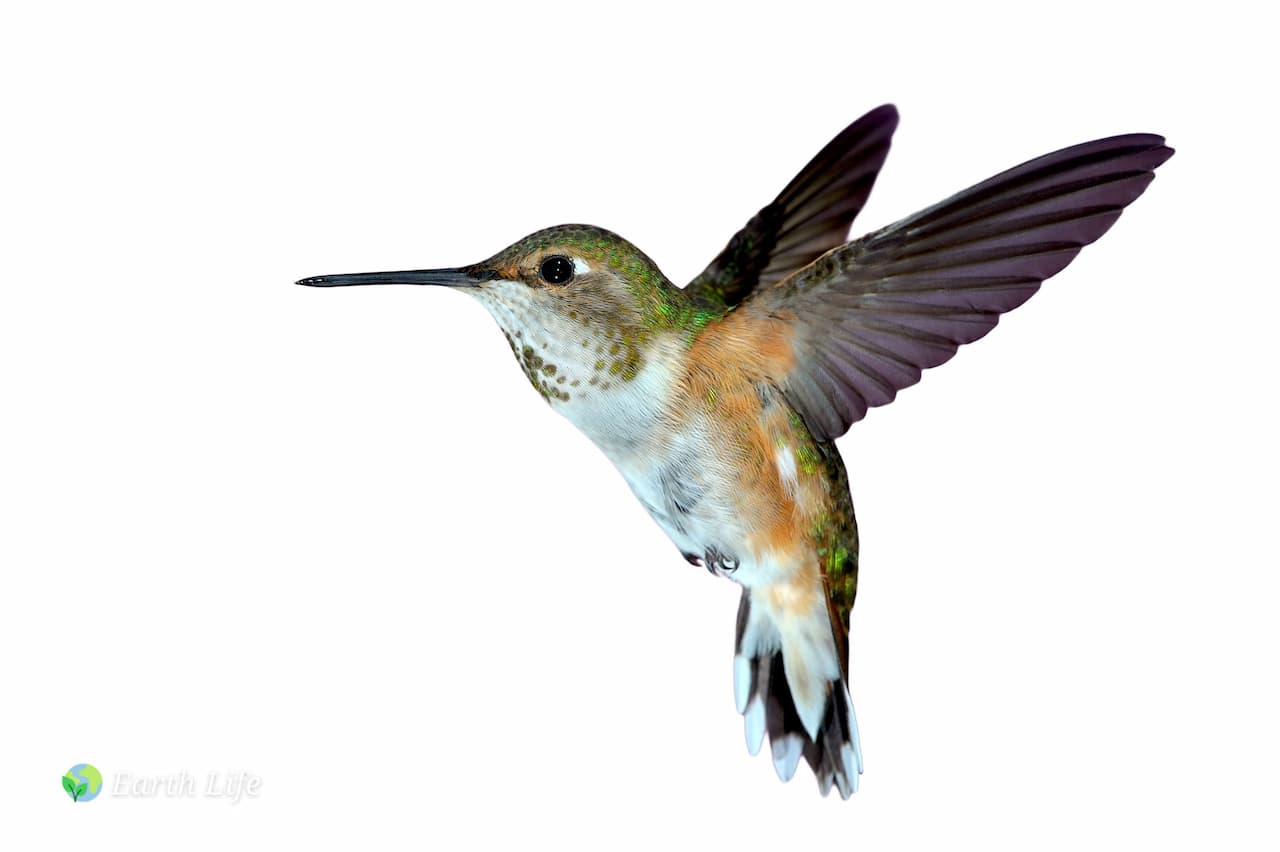
Rufous Hummingbird versus the similar Ruby-throated Hummingbird (Identification)
Allen’s Hummingbirds (Selasphorus sasin) – Rare vagrants – Most easily confused with the Rufous Hummingbird, but the Allen’s can be identified by the green back whereas the Rufous Hummingbird has a coppery back.
The male has a throat that ranges in color from orange-red to yellow-orange, a back that is bright green, a rump that is rufous and its tail feathers are rufous tipped in black.
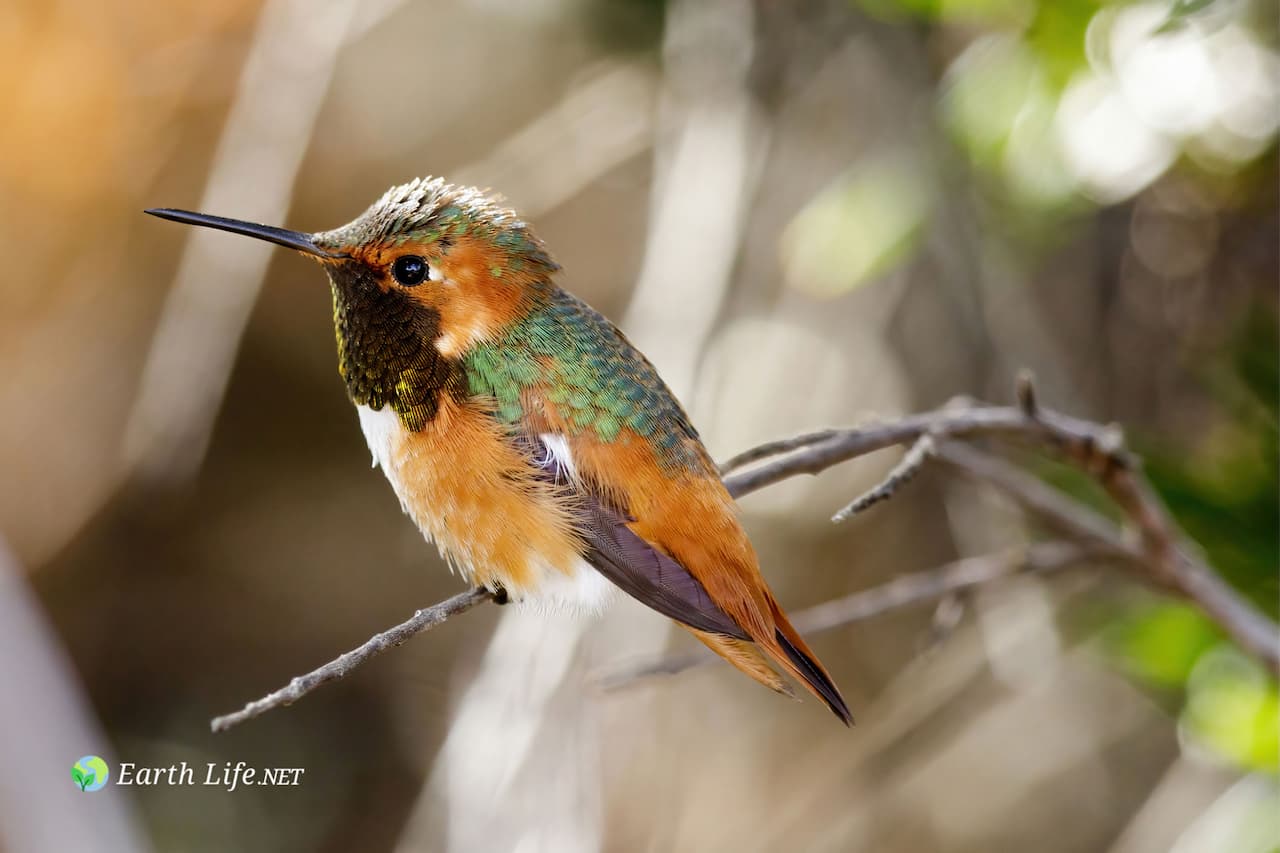
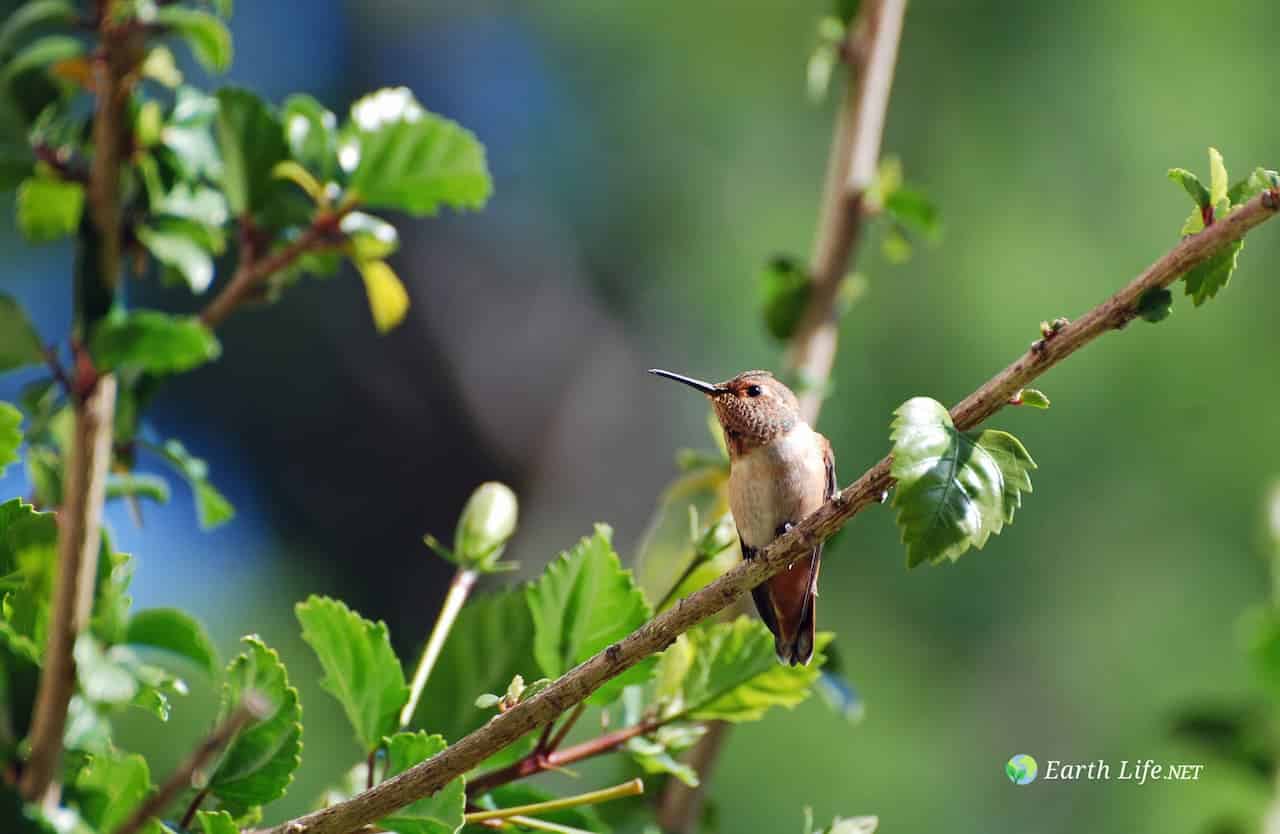
Anna’s Hummingbirds (Calypte anna)
One of the larger and the most vocal hummingbirds in the United States, where it is the only species to produce a song; specifically the males produce a complex series of scratchy noises, sounding like a sharp “chee-chee-chee; when moving from flower to flower, they emit toneless “chip” vocalizations. All other hummingbirds in the United States are mostly silent.
They are well known for their territorial behavior; the male makes elaborate dive displays at other birds and sometimes even at people. At the bottom of their dives, they produce high-pitched loud popping sounds with their tail feathers.
Males have glossy dark rose-red throats and crowns, which may appear black or dark purple in low light. The underside is mostly greyish; and the back metallic green.
Females have light grey chests with white and red spotting on the throat, greenish back and white tipped tails.
They resemble the Costa’s Hummingbirds, but the male’s Costa’s Hummingbird‘s gorget (throat feathers) is longer than that of the Anna’s. They are larger than the Rufous Hummingbirds and lack the rusty coloration of the Rufous Hummingbirds.
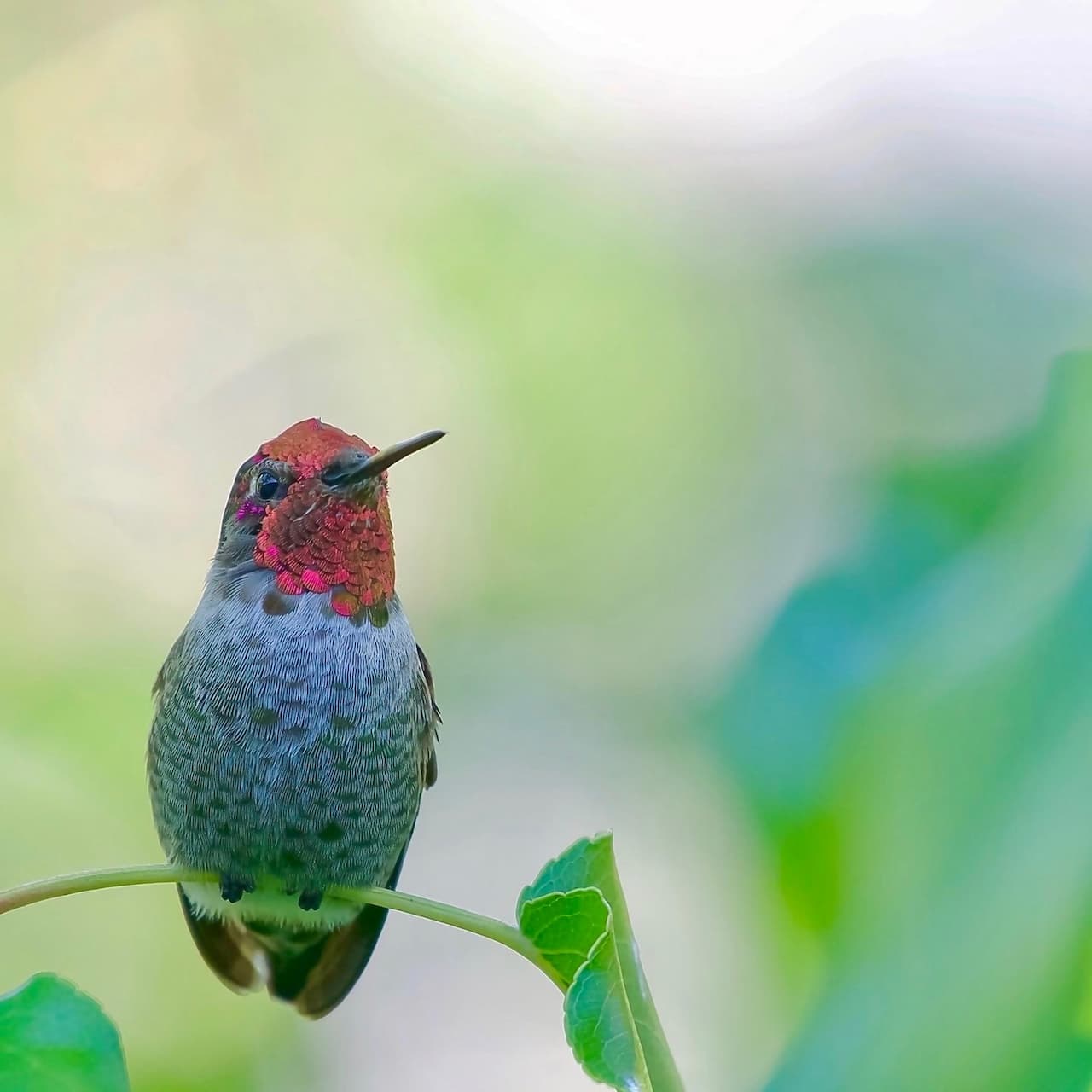
Black-chinned Hummingbirds (Archilochus alexandri)
The male has a black, shimmering throat with a purple edge and pale feathers below that create a collar. This male’s back and crown are green, and there are some green feathers covering the chest.
The female is pale below (sometimes with a slightly speckled throat) and her plumage is greenish above.

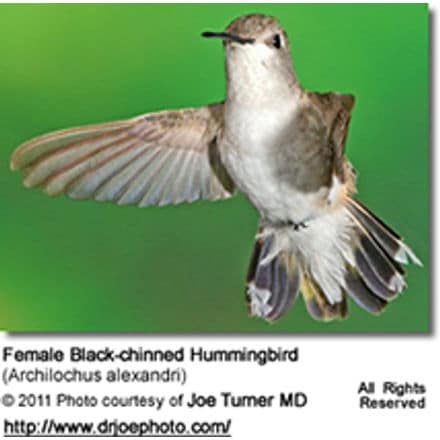
Blue-throated Hummingbirds (Lampornis clemenciae)
The upper plumage is dull green, fading to a medium grey on the underside. It has white stripes behind the eyes and a narrower stripe extending backward from the corner of its relatively short bill, next to a blackish cheek patch.
The male can be identified by the iridescent blue throat patch (gorget), which may appear black or grey color in poor light.
The female and young have grey throats.

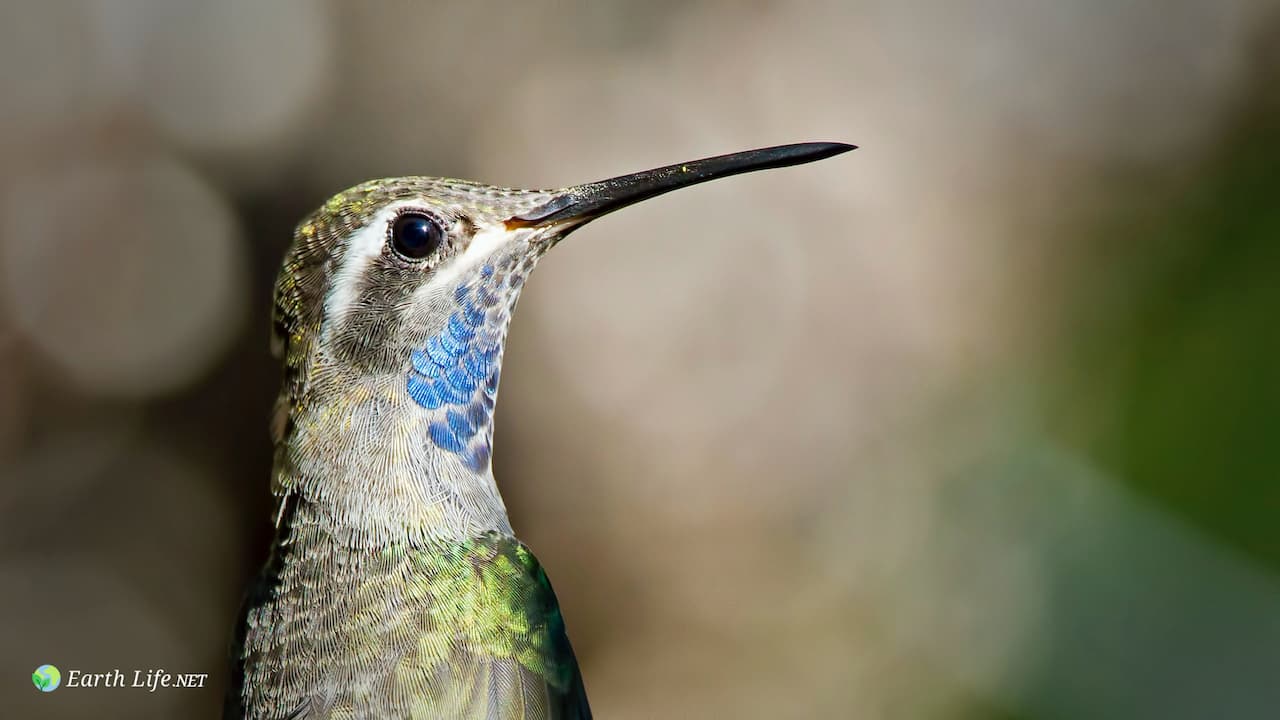
Broad-billed Hummingbirds (Cynanthus latirostris) – Accidental / Vagrants – These mostly Mexican hummingbirds venture into the United States regularly; they mostly visit the southern parts – but a few vagrants travel as far north as Wisconsin.
The male is glossy green above and on the chest. He has a deep blue throat. His straight and slender beak is red with a black tip. His slightly forked tail is dark above, and the under tail feathers are white.
The female is less colorful than the male. Her throat, chest and belly are light to medium grey. She has a white stripe over each eye.
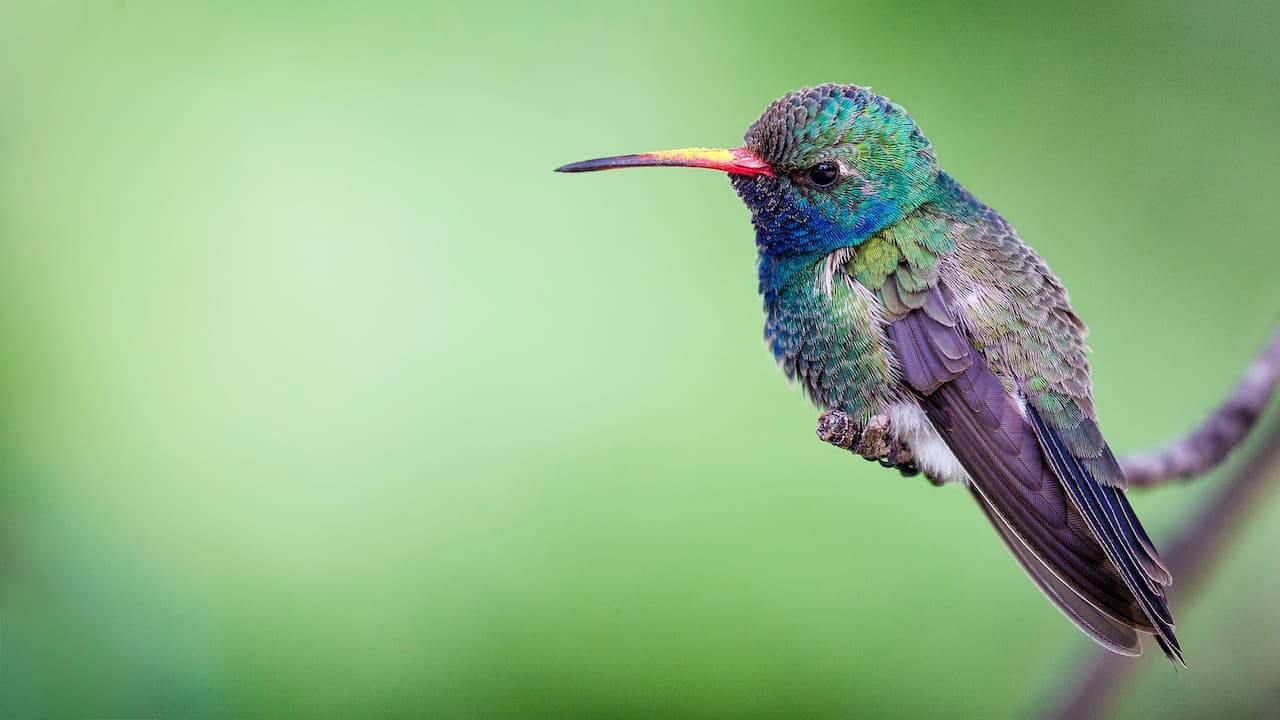
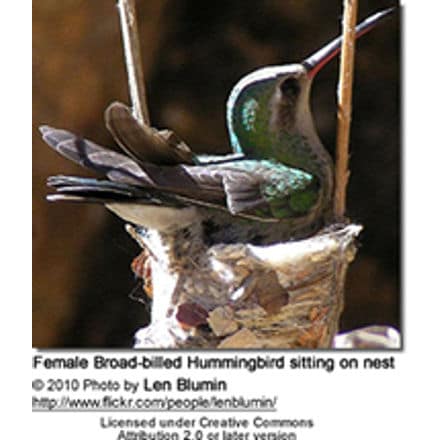
Broad-tailed Hummingbirds (Selasphorus platycercus) – Migratory hummingbirds breed across mountain forests and meadows throughout the Western United States from eastern California and northern Wyoming south through Great Basin and Mountain states to southern Arizona and western Texas. Move south to winter in Mexico, Guatemala and, occasionally, El Salvador.
Males can most easily be identified by their iridescent, rose-red throats, white chest feathers and metallic green back and crown and their rounded tails. The males’ tails make whistling noises in flight.
Females lack the flashy throat patch of the male and are mostly pale below. Their white-tipped outer tail feathers are rust-colored close to the body and blackish in the center; the tail feathers in the center range from green to blackish.

Buff-bellied Hummingbirds (Amazilia yucatanensis) – Accidental / Vagrants – Occur in fall, winter and spring
The male’s throat is a metallic golden green and the red, dark-tipped bill is straight and slender. Back and head are mostly metallic olive. The lower chest ranges in coloration to whitish with various shades of grey or green, or buffy (yellowish-brown).
The tail and primary wing feathers are rufous (reddish-brown) and slightly forked. The underwing is white.
The female is generally less colorful than the male and has a a dark upper bill
Calliope Hummingbirds (Stellula calliope) – Accidental / Vagrant – Occur in late fall, winter and early spring in Gulf Coast, Inland Coastal Plain, as well as the Mountain regions
The smallest breeding bird in North America. They are most easily confused with the Rufous Hummingbirds and the Broad-tailed Hummingbird.

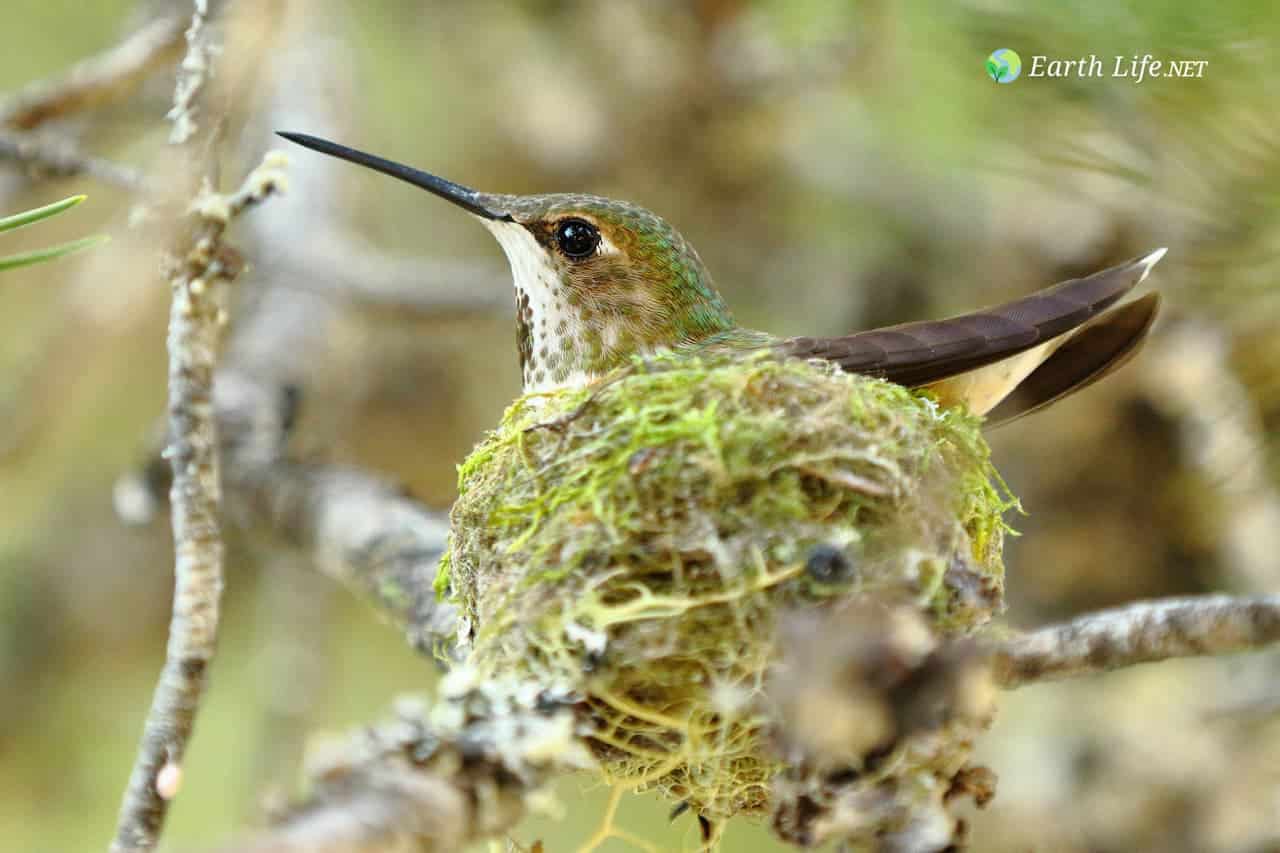
Green Violetear Hummingbirds (Colibri thalassinus) – Rare / Accidental Vagrants – They are mostly resident in Mexico and Central America, but some seasonal movements have been observed. They may wander north to the United States and even as far north as Canada..
The upper plumage is grass green graduating into bronze on the rump and uppertail feathers. The violet-blue band along the chin often connects to the violet-blue “ear.” There is a broad violet central spot on the upper breast. The tail is squarish, with a slight notch. There is a wide dark blue band at the end of the tail. Females are smaller and have a slightly duller plumage, but otherwise resemble the males.
Magnificent or Refulgent Hummingbirds (Eugenes fulgens) – Accidental Vagrants
They are nearly twice as large as any other hummingbird species found in this State, and can often be identified by their size alone.
The male has a metallic green throat and a black chest. His forehead and crown are purple and the back is dark green.
The female plumage is less bright. Her chest is solid grey. Her back and crown are olive green. Her tail feathers are pearl-grey tipped.



